Auch verfügbar auf Deutsch
The manufacturer Hanhart has a big name among watch enthusiasts, but the brand has not yet arrived in the mainstream. Hanhart Pioneer TachyTele.
One reason to put the German-Swiss watch manufacturer in the spotlight today and to take a closer look at its flagship watch. It’s worth it. I’ll just tell you this: Hanhart plays in a league with the big names like Breitling or Omega and doesn’t have to hide from them!

A journey into the history of a traditional watch manufacturer… Hanhart Pioneer TachyTele
The watch manufacturer Hanhart can look back on a long history. Although it was founded 1882 in Diessenhofen near the Swiss watch metropolis of Schaffhausen and moved to Schwenningen in Germany twenty years later, the company has only been successful since the late 1920s. The reason for this were the new stopwatches. Wilhelm Julius, the sporty son of the company founder Johann Hanhart, was an athlete. At that time, the market for stopwatches was still untapped and dominated by expensive Swiss brands. Hanhart’s first stopwatch was only half as expensive and of excellent quality when it came out in 1924. Since then, Hanhart’s eventful history has been shaped by aviator chronographs. These were primarily ordered and worn by the air force during the Second World War and were known for their robustness and accuracy.

Hanhart Pioneer TachyTele
An aviator chronograph is also the topic today, because we are celebrating an 80th anniversary. We are writing the year 1939: it is the year in which Hanhart presented a historical watch: a pilot’s chronograph – the PIONEER TachyTele. It was quickly appreciated and worn by soldiers, pilots and the navy because of its robustness and precision. The technical innovations that the TachyTele established at the time set new standards worldwide.
80 years later, Hanhart wants to revive the glorious times and reissues its masterpiece. Today I want to find out exactly what the special name is all about, the romantic story behind the red button and whether the new PIONEER TachyTele manages to follow in the footsteps of the original.

The first impression – Hanhart Pioneer TachyTele
I could be looking at a historical measuring instrument. A pilot’s chronograph, once used by pilots during the Second World War, which is now exhibited in the museum on its old days. The characteristic printing of the numbers, the traditional lettering of the Hanhart manufactory or the decorated hands…beautiful. But something is wrong here: the watch shows no signs of wear. No scratches, no wristband that dissolves and it hasn’t stopped. The truth is: this pilot chronograph has never seen a world war. My new PIONEER TachyTele is incredibly close to the original from 80 years ago, which it recites. The dial in old-white, the printing, the lettering, the leather strap… It seems as if Hanhart was able to preserve all the charm and transfer it to the new edition.

What the special name is all about – Hanhart Pioneer TachyTele
To begin with, TachyTele derives its name from two special characteristics that were essential during the pilots’ air missions. The characteristics, a tachymeter and a telemeter are two scales on the inside and outside of the dial. While a tachymeter is used to measure speeds, a telemeter can be used to determine distances. But more about how it works at a later time…
Case and movement
The housing is made of brushed stainless steel. It has a diameter of 40 millimeters, which in former times ensured good readability and must have looked huge. Today we are used to different standards. But the watch definitely doesn’t look small on my wrist. The height of 15 millimetres is “owed” to the automatic movement based on a Swiss Valjoux ETA7753. For its top model, Hanhart has once again put its hand to it and converted the automatic movement at its headquarters in Gütenbach in the Black Forest into a HAN3703 in order to achieve an asymmetry between the two pushers and the crown. The asymmetry was made especially for the pilots to be able to operate the watch with clumsy gloves. Another reason why changes are made to the movement is to make the totalizers for the small second and the 30-minute counter at 9 and 3 o’clock. This arrangement is unusual today.
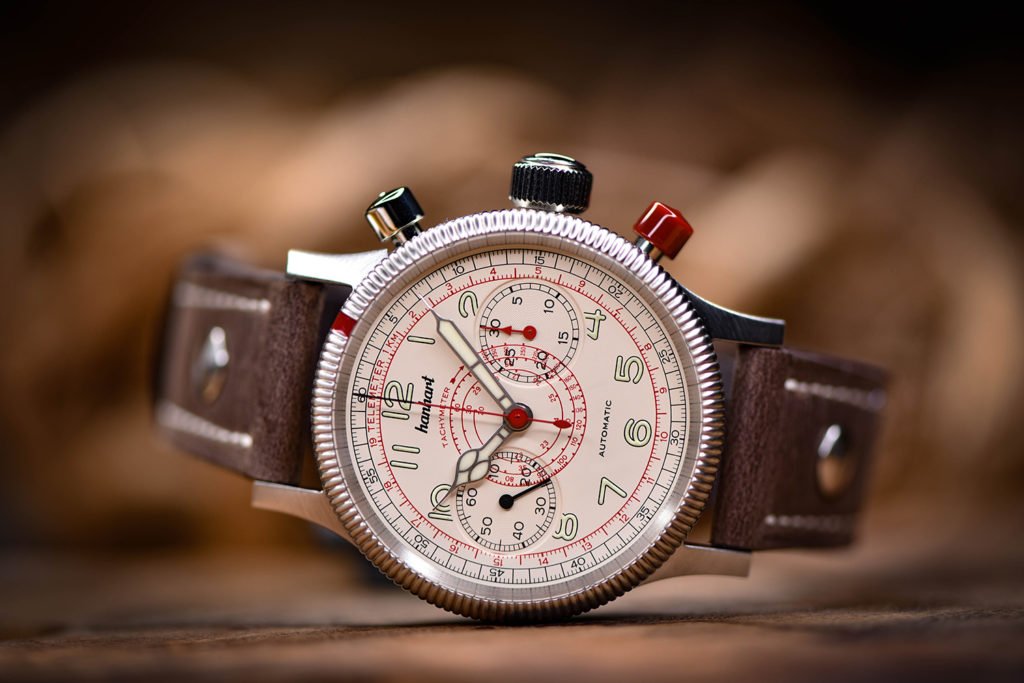
The movement is operated with 27 jewels and a power reserve of 42 hours. The case has a screwed back. It is water resistant up to a pressure of 10bar / 10ATM, thus up to a depth of 100 meters.
A Hollywood-ready love story
Have you noticed the lower of the two reset pushers yet? You are right, it’s red in contrast to the upper one. Behind it is an almost heartbreaking story, which is said to have happened so often. Fighting pilot in war was a risky profession. When the wives and the family said goodbye, the pilots didn’t know whether they would ever see their loved ones again. As assistance the wives are supposed to have painted the pushers of their men with red nail polish before a mission journey, so that these would think always of them and would return safety…
I don’t know if that really happened. What is certain, however, is that the red pushers, which soon became trademarks, had a practical reason. If there were hectic and dicey moments during the flight, the red pusher should prevent the pilots from unintentionally changing the stop time.
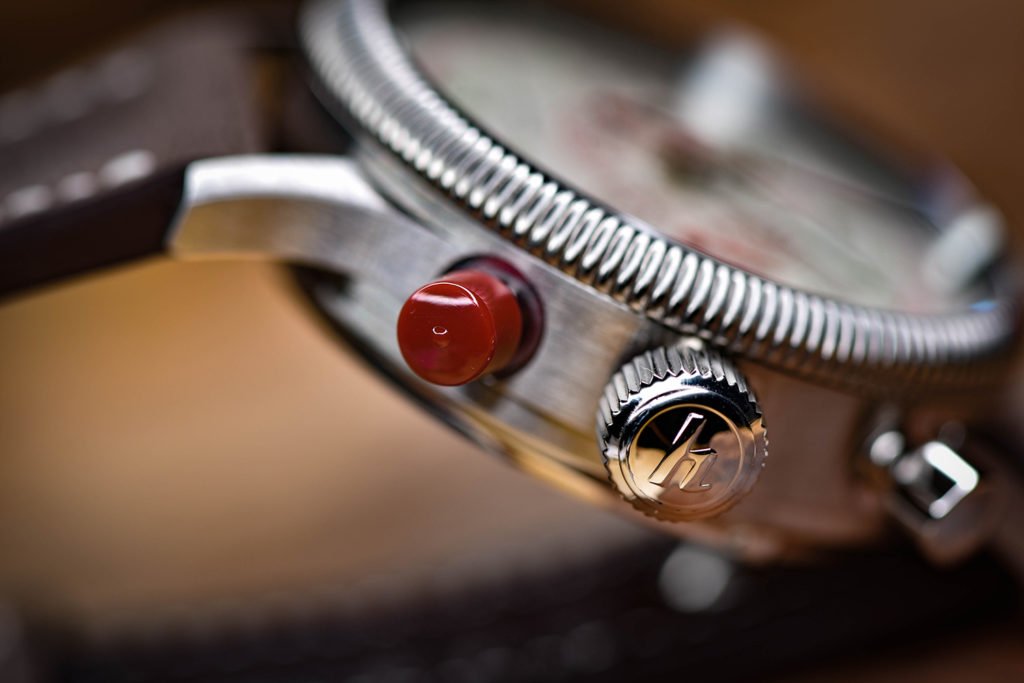
Nowadays Hanhart scarcely steals the nail polish from innocent wives, which should not have happened before. In order not to risk peeling off the paint, a mixture of ceramic and plastic is used instead.
The crown has a sufficient size and is easy to use, which benefited the pilots. It has an engraved “H”.
The Dial
Pilot chronographs were general-purpose measuring instruments for pilots. The design of the dial of the PIONEER TachyTele is primarily aimed at good readability and functionality. All adjustments had to be made even under difficult conditions such as darkness, rain or thunderstorm. The pilot had to trust his chronograph.

The dial consists of a main index, three small scales and two totalizers. The hour and minute hands are white and have silver appliqués, in my opinion a special eye-catcher. By the way, they are coated with “Super-Luminova” luminous material. They show the time, which can be read from large numbers printed in outline font. The totalizers at 9 and 3 o’clock indicate the small second and the 30-minute time. Both totalizers are slightly raised out of the dial. They can be read off optimally despite the small diameter. The “Automatic” lettering and the Hanhart logo decorate the old-white, almost creamy dial, which is also available in black.
Tachy- and Telemeter
The eye-catcher of the TachyTele by Hanhart are the red applications on the dial, which successfully pick up the red pusher again. The tachymeter turns like a snail in the middle of the dial. If you now know a distance of one kilometre, for example, you can stop the time that a car needs for this distance. Thus, a speed of 120 km/h can be calculated for a time of 30 seconds. But since we all don’t like to calculate any more since school, the tachymeter relieves us of mental arithmetic in everyday life and shows the speed directly by the fine, red stop hand. The scale ranges from 20 to over 450 km/h and thus just covers my speed on the motorway.

The telemeter has been used since the end of the 18th century to measure distances. And sorry for the math and physics lessons I’m giving you here. As we all know, light spreads faster than sound. In order to be able to determine distances with the telemeter, we need a distant event that is both visible and audible – a thunderstorm, for example. We start the stop time when we see the lightning and stop when we hear the thunder. The distance of the thunderstorm is now shown on the red outer telemeter scale. It ranges from 0 to 19 kilometres.
The bezel…
I like the fluted bezel very well! It has a red marking and can be turned very fluidly. Here you can see once again how well thought-out the haptics are and how easy the TachyTele is to use even under the most difficult conditions. The elapsed time can be read in 10 minute increments on the outermost, black scale, which is separated from the bezel by a stainless steel ring that nicely picks up on the case design.

The robustness of this chronograph is underlined by the use of a convex sapphire crystal with an anti-reflective coating on both sides. Although today, as 80 years ago, safety precautions such as shock absorbers are already in place, the sapphire crystal adds an extra touch. In addition, the anti-reflective coating has a positive effect on readability.
The bracelet
My TachyTele has the brown calfskin strap, which I personally like best. The wearing comfort is extremely pleasant. Alternatively, you can also change to a high-quality stainless steel bracelet.
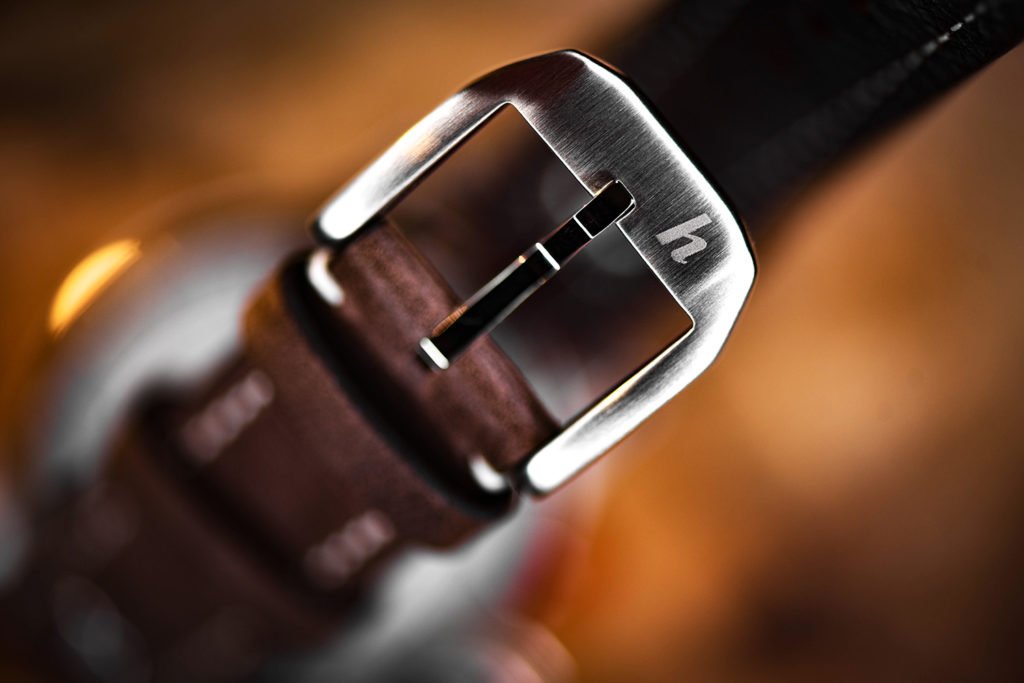
Differences to the original and my conclusion
“The new model is out and there is no difference to its predecessor!” A sentence that would cause great consternation and hysteria in the smartphone world is music to the ears of watch lovers of legendary models. The Hanhart PIONEER TachyTele is such a watch. The new edition on the occasion of the 80th anniversary of the classic is in no way inferior to the original. Well, there are some differences. For example, the readability of the dial as a whole has been improved by, for example, marking the tachymeter screw with significantly fewer numbers or printing the words “Automatic” instead of “17 Steine” over 6 o’clock. The fact that time has entered the country can also be seen from the Hanhart lettering at 12 o’clock, which is somewhat more modern and reduced.
But that doesn’t stop it – on the contrary. The changes are marginal and sensible.
Nowadays we can consider ourselves lucky to have no more wars in Europe and thus much fewer air missions with fighter jets. What remains is, among other things, this piece of jewellery. With all the memories of the pilots on their dangerous missions. Nobody buys the PIONEER TachyTele today to seriously measure distances to the next target, speeds or elapsed time. Rather, it is a matter of appreciating and celebrating the quality of the watch of that time – its precision, robustness and beauty. I can only warmly recommend the pilot’s chronograph to all those who like this masterpiece of technology for that time. The TachyTele is and remains a true pioneer.
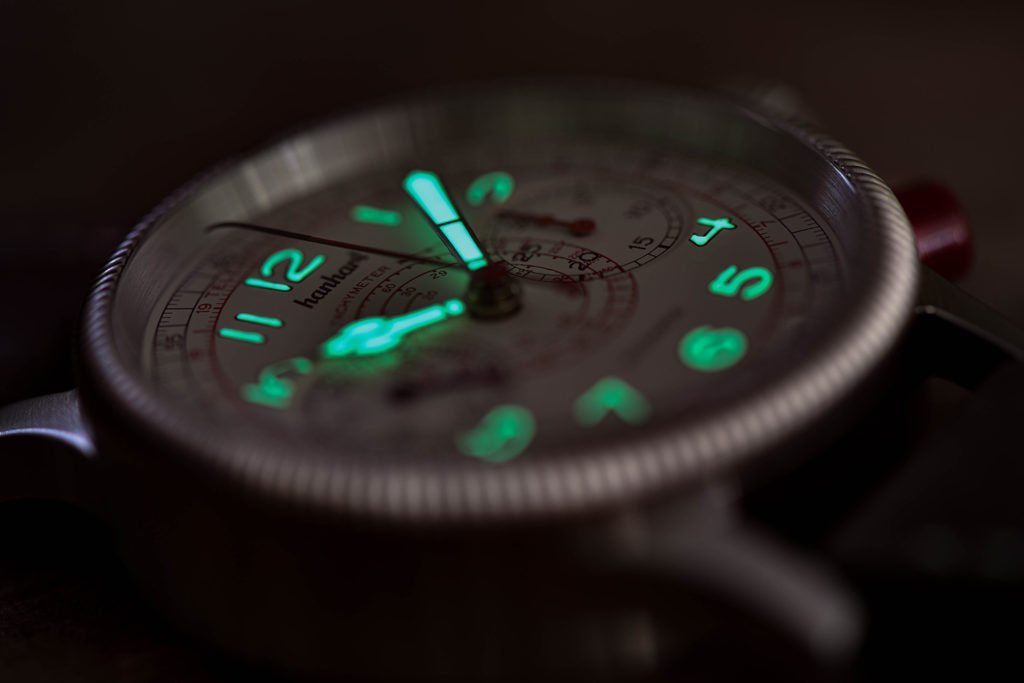
Manufactured in Germany, the watch comes with a 2-year guarantee and is available from 1940€, depending on the equipment.
Galery – All photos from WATCHDAVID®
More about Hanhart here:
Watch Manufacturer Hanhart 1882 – Portrait
Facebook // Instagram // Pinterest // Twitter // YouTube // LinkedIn





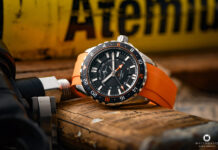










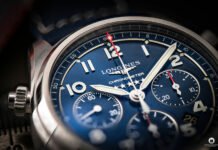



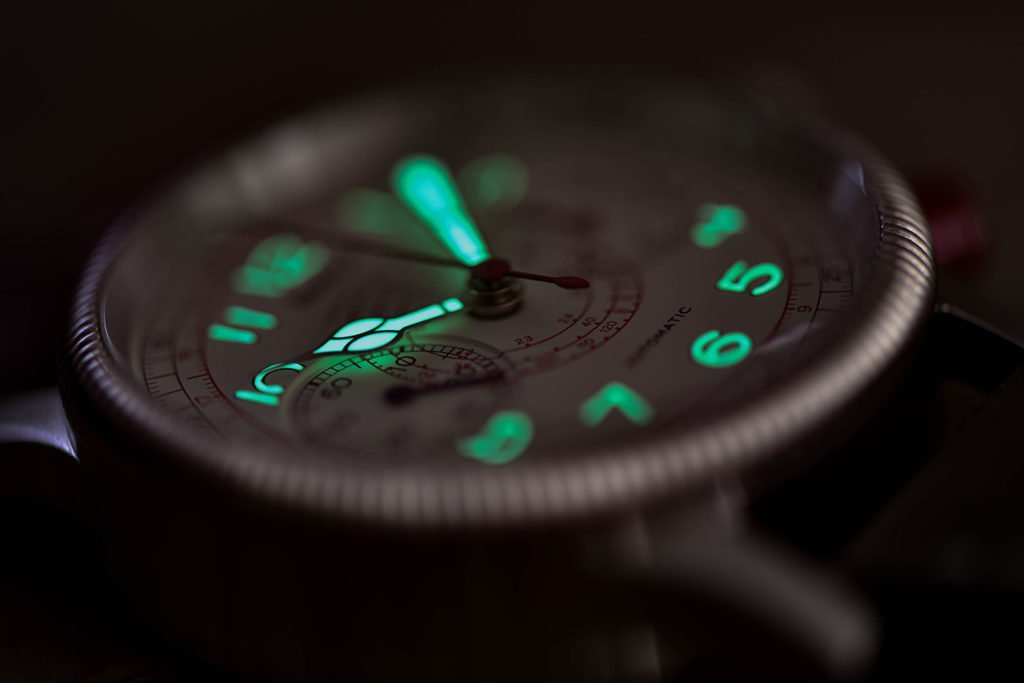








[…] Hanhart Pioneer TachyTele Review […]